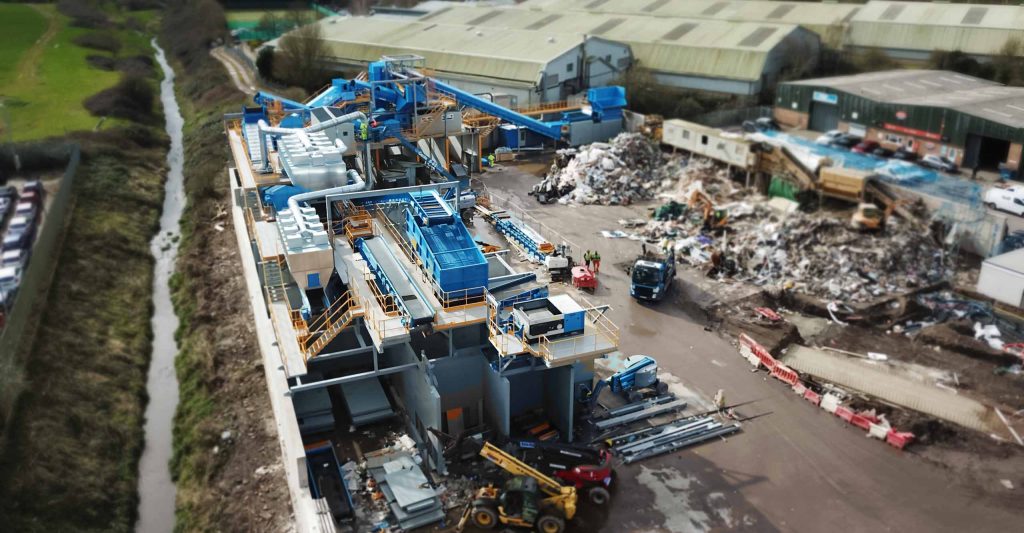A waste transfer station is a light industrial facility where municipal solid waste is temporarily staged in the course of its eventual journey to the landfill or waste-to-energy facility. Typical activities at the waste transfer station involved the unloading of garbage trucks, pre-screening, and removal of inappropriate items such as automobile batteries, compacting, and then reloading onto larger vehicles, including trucks, trains, and barges to their final destination.
In urban areas, the location of waste transfer stations can be very controversial. Such facilities are therefore typically fully enclosed. They may be co-located with a material recovery center.
Benefits of Transfer Stations
The transfer station is a key component of cost-effective solid waste transportation. By transferring waste from local collection vehicles onto larger trailers or other transport modes such as barge and rail, the cost of transportation to distant disposal sites can be significantly reduced, freeing collection-specific vehicles and crews to devote their time to actual collection activities.
Here are some of the main benefits:
- Provides fuel savings, reduction in road wear, and less air pollution due to fewer vehicles being on the road.
- Provides trash and recyclable material drop-off location for citizens.
- Reduces total traffic congestion in the community by transferring it onto larger vehicles.
- Reduces total truck traffic and improves safety at the landfill or waste-to-energy facility.
- Provides the opportunity to screen incoming trash for such purposes as removing hazardous waste or recovering recyclables.
Waste Transfer Station Locations
Although waste transfer stations are a vital component of modern waste management programs, the location of such stations can be a flashpoint for local NIMBY sentiment.
Here are some of the key concerns of citizens and standard management measures:
- While overall traffic is reduced, truck traffic near the transfer station is increased. As such, waste transfer stations may benefit from being located in industrially zoned locations with easy access to major transportation routes.
- Noise associated with heavy trucks, front-end loaders, and conveyors can be a source of concern for neighbors. Design details such as setback, sound barriers, and enclosures can play an important role in neutralizing this concern.
- Certain types of trash, especially organic material, can create an odor problem. Odor problems are addressed by attention to facility and doorway location, air venting systems, and a first in-first out system to ensure that garbage does not remain at the transfer station longer than necessary.
- Rodents and birds can pose a problem if the facility is not enclosed and is not regularly emptied and cleaned, as well as having a pest management program.
- Litter flying from trucks or the transfer station can be a concern. Operators must take care to fully tarp loads, while facility landscaping should provide a wind barrier to eliminate litter being picked up in gusts.
The Basics of Transfer Station Operations
Here’s some insight into the day-to-day operations of a transfer station:
- Arrivals and scale: Inbound commercial vehicles are first directed to the scale house. Loads are weighed, and tippage fees are assessed as applicable. If a transfer station allows the public also to drop off solid waste, there may be a separate queue and scale for this purpose.
- Tipping, processing, and reloading: Vehicles are unloaded at the main transfer building. Solid waste may be dropped onto the floor, into a pit, or immediately onto another vehicle. During this process, transfer station employees will screen the waste for any unauthorized materials. Compactors are used at some transfer stations to compact waste and thereby increase the payload of outbound trailers.
- Facility: The facility typically includes a scale location and an enclosed building where tippage and transfer take place. The property requires adequate space to facilitate the queuing of vehicles at the scale and the main building. As well, there should be space to accommodate the parking of outbound transfer trailers. Additional property will be required for staging unacceptable garbage. Some waste transfer stations provide space for the public to drop off green waste or other approved recyclables.
- Basic equipment: Aside from scales, transfer stations typically use equipment such as front-end loaders, cranes, conveyors, walking floors, and compactors.
- Staffing: Waste transfer stations require customer service and scale house operators, traffic controllers, equipment operators, maintenance mechanics, as well as other technical and management staff.


